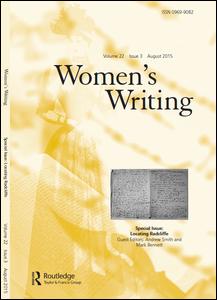
Women's Writing
Volume 11, Issue 3, Oct 2004
Pages 347-362
- DOI: 10.1080/09699080400200236
- Print ISSN: 0969-9082
- Online ISSN: 1747-5848
Of harlots and housewives: a feminist materialist critique of the writings of wollstonecraft
Abstract
The prostitute is a persistent, organising force in Wollstonecraft's writings, a fetishised figure as it were, whose repetitious recurrence betrays a conflicted attitude toward Wollstonecraft's endorsement of eradicating expressions of female sexuality. In A Vindication of the Rights of Woman (1792), the prostitute is also part of a rhetorical strategy: by drawing analogies between prostitutes and middle-class women, Wollstonecraft could present her radical attempt to restructure the English middle classes along gender lines as a conservative attempt to reform English society along class lines. It is a strategy that requires representing prostitutes as morally rather than materially endangered – a representation seriously at odds, it would seem, with Wollstonecraft's later Maria (1798), a text considerably less complicated by an appeal to cross-class female suffering than the earlier exegesis on female emancipation. Yet ultimately, in A Vindication and Maria both, working-class women, prostitutes included, are the mainstay of an envisioned society designed with the social and intellectual development of middle-class women in mind.